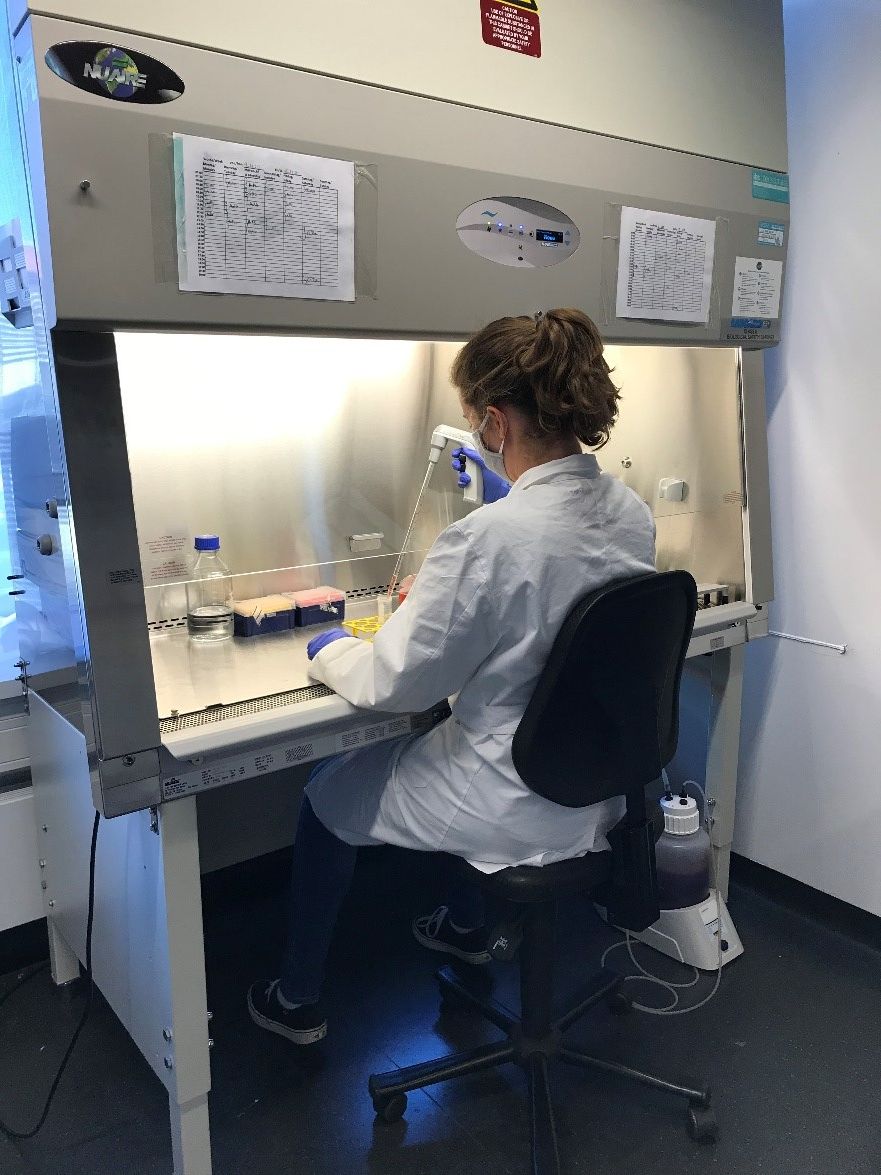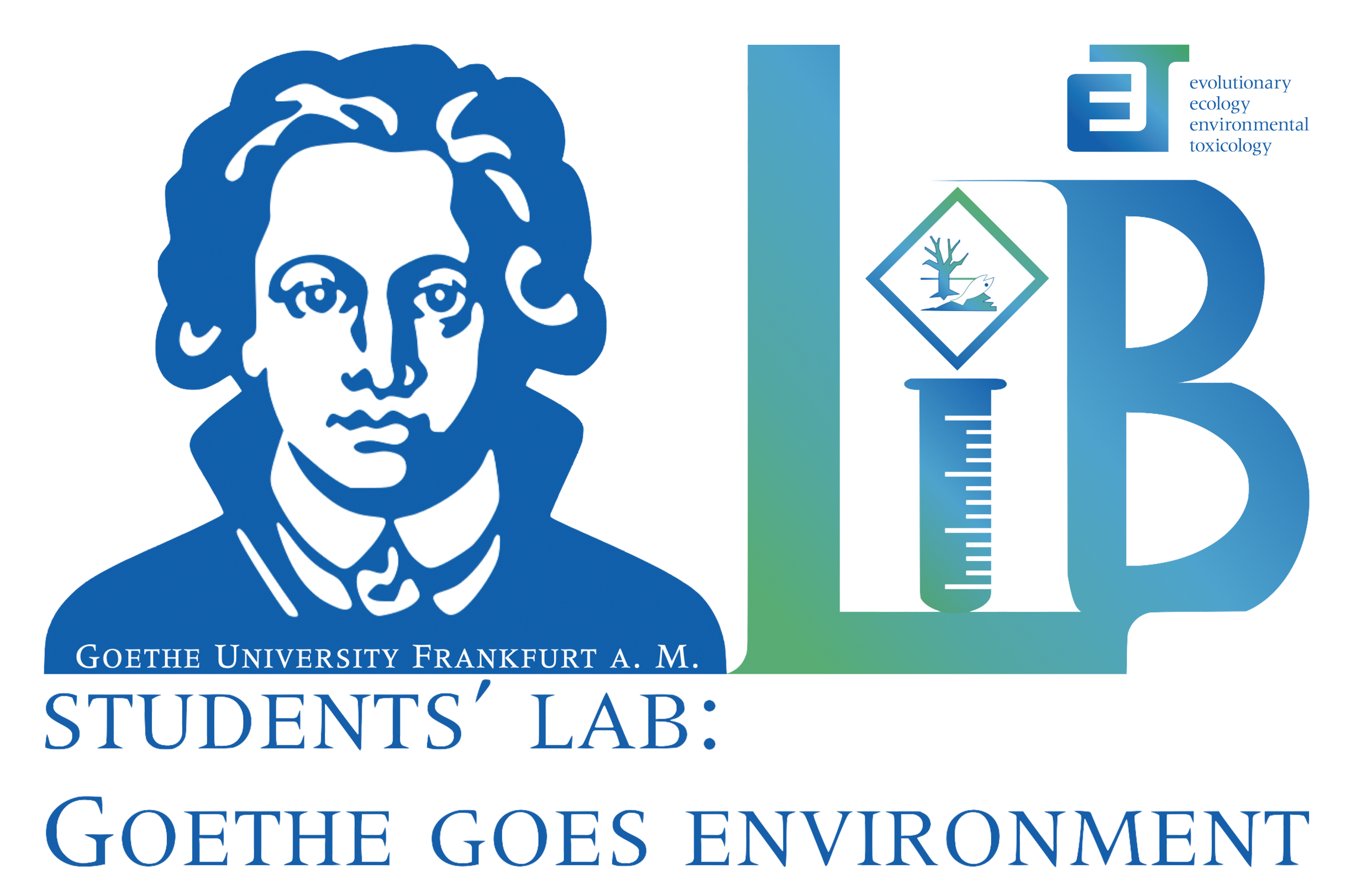- GU Home
- Biowissenschaften
- Institute und Einrichtungen
- Institut OED
- Abteilungen
- Abt. Hollert
- Students' Lab
- Alternative methods
Since Russel and Burch's publication in 1959 replacement, reduction and refinement of animal experiments (3-R's principle) has been a central dogma in science for ethical and animal welfare reasons. Therefore, the development and use of in vitro tests is an essential task in many research areas, to reduce and avoid future use of living organisms. In vitro tests are based on less complex systems such as cells, tissues or organs, which allow for the detection of specific effects or molecular pathways. On the other hand, this leads to a limited transferability of the results to a whole organism.
Cell cultivation offers many advantages for in vitro testing. Cells can be isolated from various organisms or organs and then multiplied under specially adapted conditions. One can isolate cells directly from plants, animals or humans to start a primary culture. This primary culture can be further developed into a secondary cell culture by sub-cultivation. Further cultivation selects only for cells still capable of division outside of the organism, from which cell lines can be obtained. However, after several steps of passaging (dilution and division of the cells into new culture vessels), the cells start losing both their properties compared to cells from the organ of origin and their ability to proliferate. As a precautionary measure, cells can be frozen in liquid nitrogen after a short cultivation period to be thawed again with a low number of passages.
The conditions for the cultivation of cells include working in a sterile environment, regular changes of the cells' medium, or adding specific sera (e.g. fetal bovine serum). Since there are ethical considerations about the production of fetal bovine serum and the associated use of animals, chemically defined media, in which cells can grow without the addition of animal derived supplements. Sterile working (e.g., at an ibs tecnomara work bench, Figure 1) will avoid cell culture contamination and is a vital part of handling cell cultures. The most common type of contamination is caused by bacteria, which can be prevented using antibiotics. However, antibiotics should not be used too often due to the risk if inducing antibiotic resistance. Another important aspect of cultivating cells is checking the cell growth, which helps to determine whether the cells are healthy and grow normally or show any abnormalities. Besides, a counting chamber enables determinating the cell number so that a defined cell density can be introduced into the tests. Lastly, various culture conditions (e.g., nutrients, growth factors, hormones, temperature) differ for every cell type. Cell culture flasks and cell suspensions have to be kept in incubators to maintain the temperature, humidity and CO2-concentration for optimal cell growth. Genetic modification of cells is another cell culture technique which is inevitable for a various number of bioassays. For instance, specific in vitro cytotoxicity assays make use of genetically modified cells to detect toxic effects by means of reporter genes.

Figure 1: Working with cells under a biosafety cabinet (here from ibs tecnomara)
Cells can be cultivated either growing adherent in cell culture flasks or in shaking cell suspensions. The difference is firstly the process cell passage process: suspension cells can be passaged by adding a small amount of cell suspension to a fresh medium. When working with adherent cells, the medium must be removed, then the cell layer is washed and detached enzymatically from the bottle before the cells are diluted in fresh medium. A higher cell density in the medium can be achieved in suspension cell cultures using less material (easy scale-up). However, the disadvantages of cell suspensions are the need for shaking devices for the cell culture and the assays performed with suspension cells, and the fact that not all cells lines can be adapted to grow in suspension.
- Aktuelles und Presse
- Pressemitteilungen
- Öffentliche Veranstaltungen
- Uni-Publikationen
- Aktuelles Jahrbuch
- UniReport
- Forschung Frankfurt
- Aktuelle Stellenangebote
- Frankfurter Kinder-Uni
- Internationales
- Outgoings
- Erasmus / LLP
- Goethe Welcome Centre (GWC)
- Refugees / Geflüchtete
- Erasmus +
- Sprachenzentrum oder Fremdsprachen
- Goethe Research Academy for Early Career Researchers
- Forschung
- Research Support
- Forschungsprojekte, Kooperationen, Infrastruktur
- Profilbereich Molecular & Translational Medicine
- Profilbereich Structure & Dynamics of Life
- Profilbereich Space, Time & Matter
- Profilbereich Sustainability & Biodiversity
- Profilbereich Orders & Transformations
- Profilbereich Universality & Diversity






